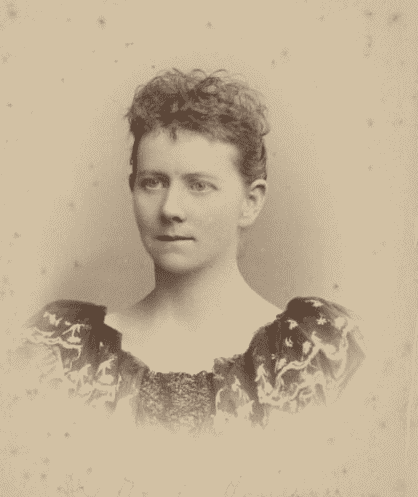Katie King
Atlanta, Georgia, United States
 |
| Mary Hannan. Photograph by Cowell, Simla. Via the Wellcome Collection. Public Domain. |
Mary Josephine Hannan was an Irish medical pioneer, an outspoken woman with a strong sense of morality, a fervid supporter of women’s rights, and a champion of children and public health. She spent her life fighting for these causes, making many enemies and friends along the way. With a passion for equality and a deep interest in her studies, she changed the medical field forever.
She was born in Dublin on January 26, 1859, to Benjamin Bloomfield and Grace Ingram Hannan. Grace died when her daughter Mary was only four years old. Mary would eventually follow in her brother Francis’ footsteps, enrolling at the Royal College of Surgeons in Ireland (RCSI). Although she was not the first woman to study at the RCSI, she was the first woman to graduate.
Hannan began her studies in November 1886 at the age of twenty-seven, only a year after women were permitted to attend the institution. There was no guarantee that she would be able to practice medicine when and if she graduated, because the medical field was completely dominated by men. She indeed graduated four years after she began her studies in 1890. One year later, The Times of India announced that Hannan would travel to India to work as the first “lady doctor in waiting.”1
Shortly after arriving in India, she dedicated herself to improving the healthcare for women and children by working at one of the Lady Dufferin hospitals. In 1896 she went to Wales, where she became the first practicing female doctor in Cardiff. In 1900 she returned to Ireland, where she practiced medicine and lived in Dublin on Merrion Square North. In 1903, she left Ireland and headed for South Africa, where she became a member of the General Committee of the South African Medical Congress. Her work there focused on improving public health for women. For years she worked with the native women as a medical officer, while also lecturing about midwifery at the Victoria Maternity Hospital in Johannesburg. In Pretoria she started a Girl Guide movement—which is similar to the Girl Scouts in the United States.
Hannan was also a pioneer in the women’s rights movement. She was an active member of the Women’s Enfranchisement League, one of the first middle-class organizations to promote women’s suffrage.2 She later refused to pay taxes that applied to unmarried women but not to unmarried men. She was taken to court for refusing to pay what she deemed a “super bachelor tax.”3 She defended herself in court, and with her quick wit and sense of humor created many “lively interludes,” as the press reported.1 However, she was also ridiculed and mocked by members of the court. Her intention was to take the case all the way to the Supreme Court if need be.
In the 1920s, Hannan left South Africa and traveled to Paris, New York, and London to continue her work and studies, and obtained postgraduate degrees from London and Paris. While in New York, she worked with the Child Health Organization of America, focusing her research on child and public health. She wrote and published articles about public health in magazines and newspapers, but it was her own handbook that made a significant contribution to the medical field. Handbook on Child Health Education and Kindred Subjects for South African Parents and School Teachers was published in 1924 and was used as a reference until the middle 1970s.4 One focus of the handbook was the importance of teaching children about sex education, a stance that was wildly progressive for the period. In her handbook, she analyzed why sex education was not often taught to children and took apart each reason. She believed that parents were responsible for teaching sex education and wrote her handbook as a guide. Ahead of the times, Hannan described sex as natural, rather than taboo.
Hannan retired in Hartbeespoort, where she lived until her death in 1936 when she was seventy-eight. On March 9, 2019, eight portraits of Irish women in the medical field were unveiled at the RCSI. This was a part of its project Women on Walls, a campaign that seeks to highlight women’s achievements through commissioned portraits.5 Hannan’s dedication to her studies, as well as her perseverance for women’s equality, shaped generations after hers. Her legacy will be memorialized at the same place she began her career.
References
- Dr Mary Josephine Hannan (1859-1936). June 13, 2019. Women on Walls at RCSI. Accessed March 29, 2021. https://podtail.nl/podcast/women-on-walls-at-rcsi/dr-mary-josephine-hannan-1859-1936/
- University of North Carolina History Department. Towards emancipation? Women in modern European history: a digital exhibition and encyclopedia. Women’s Franchise League (1889-1930). Accessed March 29, 2021. https://hist259.web.unc.edu/womensfranchiseleague/
- RCSI. Women on Walls at RCSI. Dr Mary Josephine Hannan. Accessed March 29, 2021. http://women.rcsi.com/women/dr-mary-josephine-hannan/
- Hannan MJ. Handbook on Child Health Education and Kindred Subjects for South African Parents and School Teachers. Cape Town and Johannesburg: Juta & Co., 1924.
- McGarry P. Eight portraits of pioneering Irish medical women unveiled at Royal College of Surgeons. March 5, 2019. Accessed March 29, 2021. https://www.irishtimes.com/news/social-affairs/eight-portraits-of-pioneering-irish-medical-women-unveiled-at-royal-college-of-surgeons-1.3815429
KATIE KING is a freelance writer located in Atlanta, Georgia. She is a graduate of Columbus State University, and her work mostly focuses on the arts, as well as travel.
Spring 2021 | Sections | Women in Medicine

Leave a Reply